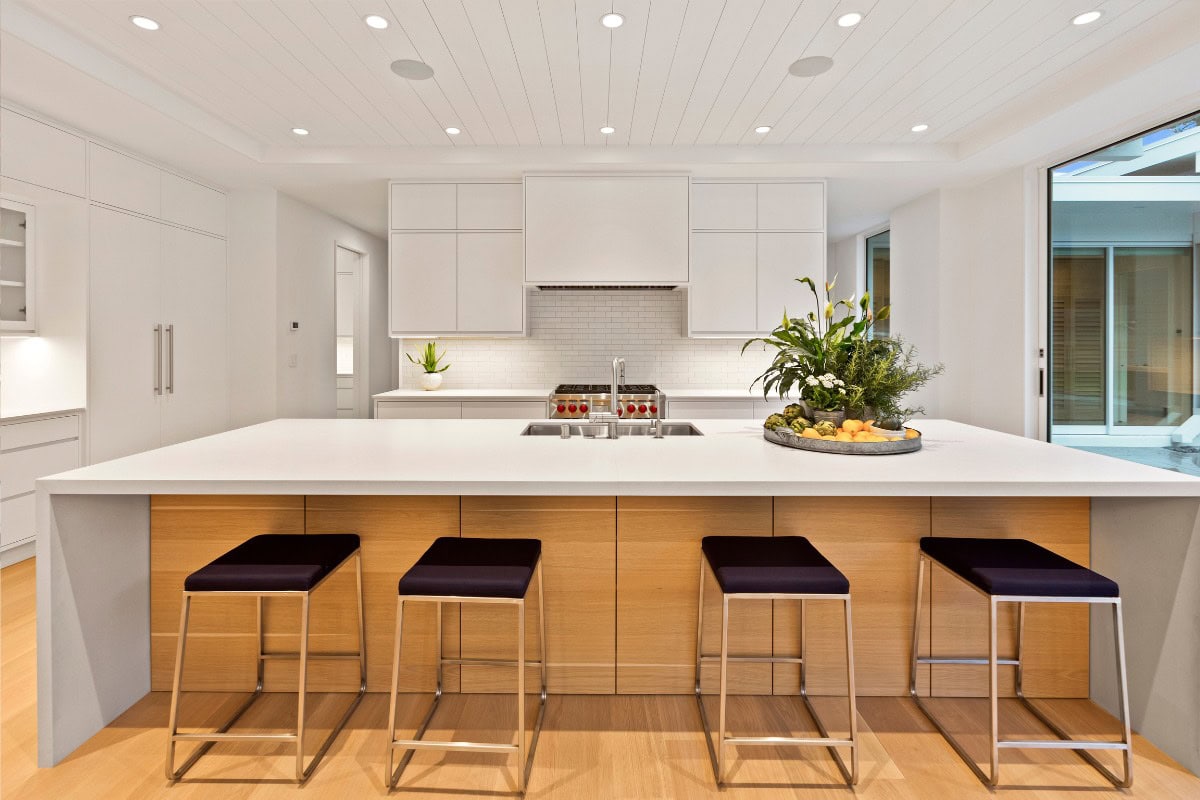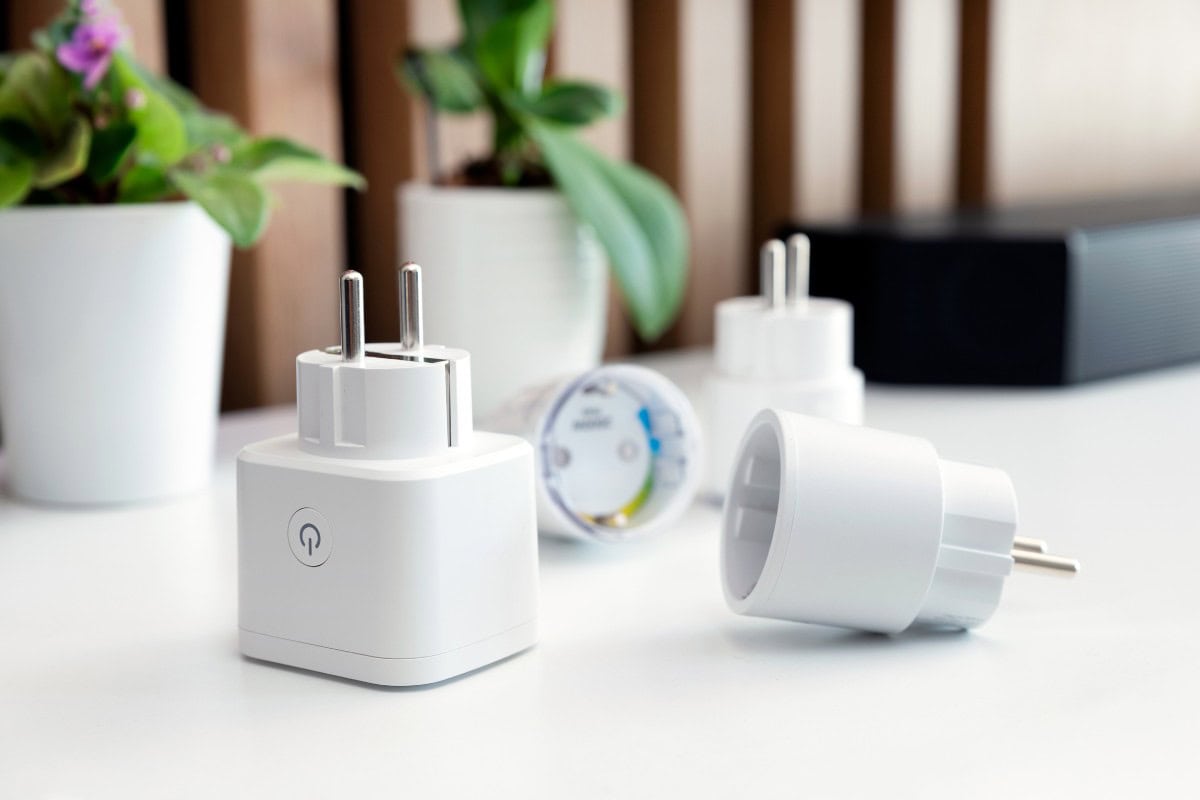The problem with talking about kitchen lighting design – actually, the problem with talking about any type of interior design – is that the conversation seems to always begin with a list of hard and fast rules. Rules are tricky things, mainly because they don’t take individual situations, home layouts, or preferences into account.
There are probably thousands of suggestions out there for how to best light the generously sized kitchen of a four-bedroom colonial, but that doesn’t help you update your 200-year-old farmhouse, your converted loft apartment, or your space-efficient condo.
In other words, we are not here to waste your time with rules that don’t apply to you in the first place.
Instead, our goal is to present you with useful information that can be applied to any kitchen lighting design situation and some tips and tricks that will make your project less of a headache and more fun.
So, let’s dive in and begin outlining your basic guide to kitchen lighting.
Common Types of Kitchen Lighting
Certainly, this is not a complete list, but what follows are some of the most common types of kitchen lighting, what they look like, and what they accomplish.
Chandeliers
Chandeliers are fixtures that tend to hang down from a central ceiling attachment. Thanks to the countless shapes, sizes, and designs, chandeliers can really add to the design statement a room is making while also serving a very helpful function. Whether the chandelier is outfitted with uplights, downlights, or in some cases, both, chandeliers provide ambient lighting that illuminates a large area.
Ceiling Fixtures
Ceiling fixtures refer to lights where the class housing concealing the bulbs is either flush or semi-flush with the ceiling. These lights also provide plentiful ambient light, making them popular choices for illuminating large areas or acting as the “main” light for the kitchen.
Track Lighting
Track lighting is very versatile, making it a popular choice for kitchen work areas. The track attaches to the ceiling, and various types of spotlights, task, or accent lighting can be attached and directed as needed. Track lighting can also serve as a main lighting source.
Recessed Lighting
Recessed lighting refers to light fixtures that obscure the bulb and fixture by concealing them within the ceiling. Recessed lighting is a popular choice for providing ambient light, but it can also be used directly over countertops, islands, or sinks as a source of brighter task lighting.
Pendant Lights
These light fixtures are made with both form and function in mind. Because pendant lights tend to hang down in a person’s line of sight, the fixture itself becomes decorative. However, the purpose of pendant lights is to provide task lighting (bright lighting focused on workspaces such as counters or islands) to increase efficiency in the room.
Wall Sconces
Popular places to put wall sconces might include on either side of a decorative backsplash, flanking a hutch or other piece of furniture, or complementing the chandelier in a dining area. The brightness and color of the light emanating from sconces will vary depending on personal preference, but typically sconces provide an additional layer of light over the ambient lighting in the room.
Undercabinet Fixtures
These are usually small, bright lights installed in strips, “pucks,” or small tracks attached to the underside of your upper cabinets. These are a great way to provide additional task lighting and visibility for countertops and sinks and can be a great DIY option for those looking for an inexpensive update.
Of course, it’s not completely out of the question to see other fixtures, such as floor lamps, table lamps, kickboard lighting, etc., also in a kitchen. However, most frequently, when you are choosing your kitchen lighting design, you will be choosing from among the fixtures in the list.
What You Should Know about Light Temperature
In this case, temperature doesn’t mean heat.
Instead, temperature refers to “light temperature,” which is a combined measurement of brightness and color. Light temperature is measured in degrees Kelvin, and most modern light bulbs will list their light temperature along with their wattage and lifetime hours on the packaging.
Here’s what you need to know.
The interior lighting that we as humans seem to universally find the most pleasant registers somewhere between 2700 Kelvin and 3500 Kelvin. This is what is known as “soft white” light. It’s the faintly yellowish, warm tones we are used to seeing coming out of old-style incandescent bulbs.
As the light temperature gets higher, we progress from a warm yellowish light to a bright white light to a more severe light that appears bluish in tone (with a temperature of 10,000 K and higher, mimicking broad daylight.) As with all things in interior design, what works for one home may not work as well for yours. Light temperature is a great thing to experiment with a little bit, seeking to get a feel for what you prefer and what temperature works best in your kitchen.
When planning your lighting, remember that the kitchen is a multi-purpose room. You will use it for food preparation, dining, entertaining, reading and writing notes, and maybe even helping the kids with their homework. Each of these tasks will call for different levels of lighting, and different light temperatures to maximize efficiency. One of the best ways to plan for and accommodate all the different activities in your kitchen is to consider putting all or some of your lighting on dimmer switches. This allows you a further level of control over the way your kitchen looks and feels.
Lighting Your Island or Workspaces
If your home is a bit older, chances are pretty good that your kitchen came equipped with one or two light sources, both of which were attached to the ceiling and provided general ambient light. This can make it a bit of a nightmare when you are trying to deal with food preparation, clean dishes, or even sit down to pay bills at the table.
What you’re lacking in this situation is task lighting.
However you choose to proceed, don’t forget to add ample task lighting to your new kitchen lighting design. Whether this comes in the form of pendant lights, track lighting, or undercabinet lighting, it will provide you with the extra illumination you need to make working in the kitchen a more pleasant and easy experience.
More Light is Better
In fact, extra task lighting is only one piece of the puzzle. Again, no hard and fast rules here, but there is one really helpful and intuitive guideline to remember: it’s better to have too much light than too little.
Remember that you can design your various layers of light and light sources so that they have separate switches. If you feel the kitchen is too bright at times, go ahead and switch off the lights you don’t need. However, if the lighting design in your kitchen leaves things too dark, that presents a problem that is not so easy to fix.
And don’t forget that the natural light levels in your home will change throughout the year. If you are designing a kitchen in early June, when abundant daylight is streaming through your windows and skylights, you may find that the “just enough” light levels you chose in the summer leave the room too dim for your liking once December rolls around.
Coordinating Light Fixtures and Decor
Having multiple light sources in your kitchen is always a good idea, but it can make some people nervous, thinking that they have to “match” all of their light fixtures.
This one’s pretty easy: don’t match, just coordinate.
A wrought iron chandelier over your dining room table does not mean you must also have a wrought iron chandelier over your island. Instead, look for similarities in color, motif, or design that make your lights complement not only one another but other aspects of your kitchen. Perhaps the glass housing on your light fixture resembles your crown molding, or perhaps your green pendant lights help to pick out the flecks of green in your granite countertop.
Don’t let the pressure to match light fixtures exactly take the fun and creativity out of your kitchen design project.
Why Retrofit Housings Are So Great for Lighting Design
There’s no reason to dance around this issue: remodeling a kitchen can be very expensive. In fact, many people look at kitchen remodeling as an all-or-nothing choice: either bite the bullet and rebuild everything or why bother? This type of thinking is misguided, and it has also prevented some people from improving the look and feel of their kitchen for fear that it would be too expensive to do so.
There are plenty of accessible DIY projects that can be done in your kitchen, and thanks to retrofit housings for your light fixtures, even some electrical rewiring can now be done safely and affordably by homeowners.
Now, read any DIY household blog, and they will be full of warnings about how you should leave electrical projects to the pros – and for the most part, that is excellent advice (in fact, we have some in the next section). A person who does not know what they are doing when it comes to electricity can wind up hurting themselves or causing damage to their home.
But that’s not what retrofit housings ask of you.
Instead, retrofit housings are meant to either screw into, or click on to an existing light fixture, allowing you to replace old inefficient lighting for brand-new LED technology and to give some of your fixtures an updated look as well.
There are many retrofit housing kits available that allow you to update your lights easily on your own without having to involve an electrician. This is a money saver, a time saver, and an excellent quick fix for many common lighting woes.
The Difficulty of Rewiring Your Kitchen Yourself
Retrofit housings aside, it can be a risky proposition to attempt to do your own wiring as part of a DIY project.
Let’s take a look at some common mistakes made by well-intentioned homeowners who get in over their heads with electricity.
Avoid these common mistakes:
Installing New LED Light Bulbs in Incompatible Fixtures
Did you know that it may not be safe to install LED light bulbs in recessed or closed fixtures? If not, it may be because you were unaware that LED lights use a heatsink to draw heat away from the bulb, but if that heat cannot disperse, the light, the fixture, and in some extreme cases the wiring may be damaged. Always check for compatibility.
Installing Non-dimmable LEDs on Dimmer Switches
Another no-no is installing LED light bulbs on dimmer switches meant for incandescent light bulbs. You may get some buzzing and flickering when you try to operate the dimmer, and what you won’t get is dimming. Look for bulbs that are compatible with older dimmer switches, or consider updating your dimmers to keep up with current lighting technology.
Code Violations
Depending on the size of your project, you may actually need a permit to begin a large electrical rewiring project, yes even inside your own home. Working with a licensed and insured professional means that the electrical contractors will secure the permits on your behalf.
Being Unfamiliar With the Equipment
A poorly wired GFCI outlet or light switch could lead to serious problems, especially in a kitchen (several water sources and potential for spills.) Don’t attempt this unless you really know what you’re doing.
Hopefully this guide has given you a good overview of some of your options when it comes to kitchen lighting. For many families, the kitchen truly is the center of the home. It’s where the family gathers for dinner, where guests congregate during parties and get-togethers, and where the kids spread out their homework for the evening.
Having adequate lighting in this room is very important, both to enhance its beauty and utility.









